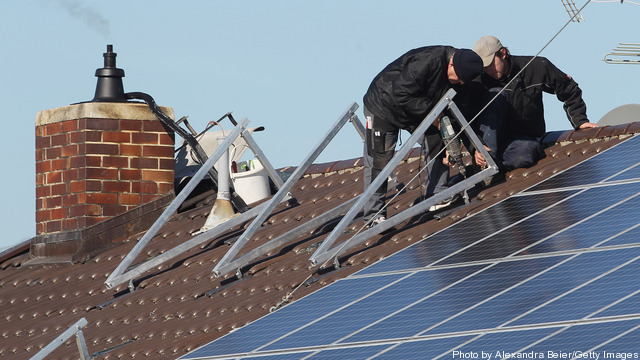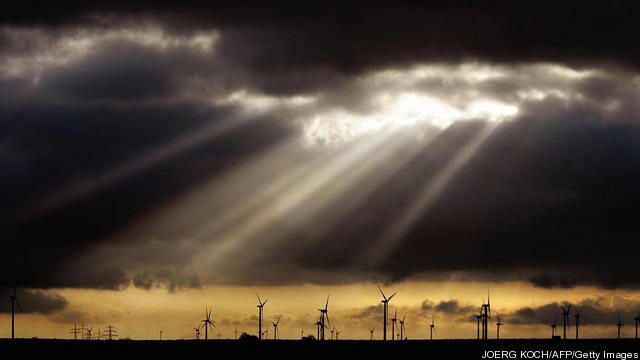Connecticut’s Clean Energy Finance and Investment Authority – the state’s Green Bank, and the first of its kind of the country – has established a new solar financing system in a bid to expand capacity in the state. CT Solar Lease II seeks to avoid some of the most frequently-cited criticisms of renewable energy finance,… Keep reading →
Subsidies
Sign up and get Breaking Energy news in your inbox.
We will never sell or share your information without your consent. See our privacy policy.Renewables are making large gains globally, but if they are to continue grabbing market share from fossil fuels, they will require reliable policy backing, according to International Energy Agency Executive Director Maria Van Der Hoeven. The IEA’s 2013 Medium-Term Renewable Energy Market Report maintains a positive outlook for growth in renewables worldwide. “Despite a difficult economic… Keep reading →
In the midst of the shale revolution, US proved natural gas reserves drove the first ever global decline in proved gas reserves in 2012, and it all comes down to low prices, according to BP Chief Economist Christof Rühl. Global proved natural gas reserves fell by half a trillion cubic metres in 2012 compared to… Keep reading →
Renewables suffered their first “serious slowdown” in 2012, as their rapid growth outpaced the capacity of some economies to continue subsidizing them, according to BP Chief Economist Christof Rühl. Global renewables consumption – defined as wind, geothermal, biomass, solar and waste – grew by 15.2% in 2012 over 2011 levels, to 237.4 million tons of… Keep reading →
Oil companies love to say that their ownership is the average American retiree, and utilities can often claim the same. Look at your retirement account or, should you be so lucky as to have one, your company’s pension plan. Odds are that it is heavily invested in the US energy sector. Shifts in the parameters… Keep reading →

The US government needs to stop giving subsidies to Big Oil! This is such a common rallying cry that few stop to consider what it really means.
The idea appears simple: Oil companies make so much money the government should not support them. But is the government giving oil companies money? How does the system really work? Keep reading →

David Cameron’s promise within his first month as UK prime minister to be “greenest government ever” looks at risk of derailment – by his own Chancellor, George Osborne.
Conservatives and Liberal Democrats appeared to carry over the political consensus on action on climate change and a switch to renewable energy. But what began as an ideological rift in the British Cabinet has become a very public clash between the Tory chief at the Treasury and the Lib-Dem boss at the Department of Energy and Climate Change. Keep reading →

In about a week, some of the brightest minds in government, industry, and academia will gather in Denver, Colorado to talk about what the U.S. can do to play catch-up in the global clean energy race. The SunShot Grand Challenge: Summit and Technology Forum is the first event in a series of Department of Energy Grand Challenges that organizers hope will address the scientific, technological, and market barriers to achieving breakthroughs in the clean energy market.
For the past five years, the fossil fuel industry has done its best to impede both public and private investment in renewable research and development. While politicians wring their hands about what might happen if fossil fuel subsidies were instead distributed to solar and wind, countries like Spain, Germany, and Japan have been jumped in with both feet. As a result, these countries are far closer to achieving solar grid-parity that we are. Keep reading →

Production tax credits for wind are creating distortions in power markets, and after 20 years of subsidies it may be time to let the credits expire, experts told an Energy Policy Forum in Washington June 5.
“We are not anti-wind,” said Mayo Shattuck, Executive Chairman, Exelon Corp. “But there comes a time when we need free-market price signals,” so businesses can make decisions on investments for the next 20 to 60 years. Keep reading →

The federal government spent $24 billion on energy subsidies in 2011, with the vast majority going to renewable energy sources, according to a government report. Renewable energy and energy efficiency accounted for $16 billion of the federal support, according to the Congressional Budget Office, while the fossil-fuel industry received $2.5 billion in tax breaks. This is a stark change from a decade ago. The CBO noted that until 2008, most energy subsidies went to the fossil-fuel industry. The idea at the time was to encourage more domestic oil production, especially when the price of oil was low. CBO said the $24 billion total is a small fraction of the hundreds of billions the government’s various annual subsidies, which take the form of both grants and tax breaks.





